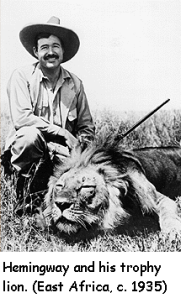
We are now ready to tackle Dickens. We are now ready to embrace Dickens. We are now ready to bask in Dickens. In our dealings with Jane Austen we had to make a certain effort in order to join the ladies in the drawing room. In the case of Dickens we remain at table with our tawny port.
This is the first paragraph in an excerpt from Vladamir Nabokov’s Lectures on Literature that I found in a preface to my copy of Dickens’ Bleak House. I think I would have enjoyed having Nabokov, author of the infamous Lolita, as a professor (it also reminds me that banned book week is coming up). The rest of this lecture is just as amusing, but informative.
But this post isn’t about Bleak House or Nabokov or Jane Austen. It’s about Charles Dickens’ short novel Hard Times. In spite of it’s brevity, it seemed to take me a long time to read. Part of the reason could have just been me, but I would put a little of the blame on the novel, itself.
My understanding (and I’m by no means an expert) is that the majority of Dickens’ novels, including Hard Times, were written in serial form for magazines. When I’ve read other Dickens novels, the question always persisted as to whether he made the story up as he went along or whether he knew how it would end when he started. Usually, some small part of the story at the end would tie back to the beginning, giving the impression that he did have the story all figured out before he started writing and giving the impression of a brilliant mind and storyteller.
Hard Times was written in the same manner and while the characters are classic Dickens and his writing is superb in his character descriptions, the individual chapters don’t quite equal the whole.
The novel begins as though it’s going to be a story representing class conflict – not surprising as the impoverished seem to gain Dickens’ sympathies in many of his novels. The Gradgrind school in Coketown led by Thomas Gradgrind, Sr. seeks to knock out of it’s students any desire for fun or imagination. While the Gradgrind family can be said to be wealthy, it’s not so much that money and the lack thereof come into conflict as hard cold facts conflict with art and creativity and just plain fun.
Thomas Gradgrind’s daughter Louisa and his son Tom, Jr. take central stage in the plot. Louisa submits to being married off to a colleague of Gradgrind in order to keep her irresponsible brother out of money trouble. Some side plots are intertwined as Stephen Blackpool one of the hired “Hands” of Coketown is falsely accused of robbing the Coketown bank and Sissy Jupe leaves the circus to live with the Gradgrinds. The novel begins and ends with the circus.
My favorite character in the novel is Coketown, itself. While Dickens desperately tries to paint the town as black and gloomy and dirty, some of his charm seems to always sneak in making the town’s bark worse than it’s bite:
A sunny midsummer day. There was such a thing sometimes, even in Coketown.
I find even the name of the town a little humorous.
The major disjoint of the novel revolves around Thomas, Sr. At the beginning of story, he’s hard and cold and willing to marry his daughter off to a braggart and boorish friend. By the end, he is repentant and willing to do almost anything to appease his daughter. Characters can change, it’s true, but usually the change process is part of the story. I looked and looked but couldn’t find reason for this change. It seemed to be pulled out of thin air.
A minor character named Mr. Sleary, one of the circus people, spoke with a lisp. Dickens wrote with a lisp when his character talked. I don’t think I’ve read anything more frustrating.
















